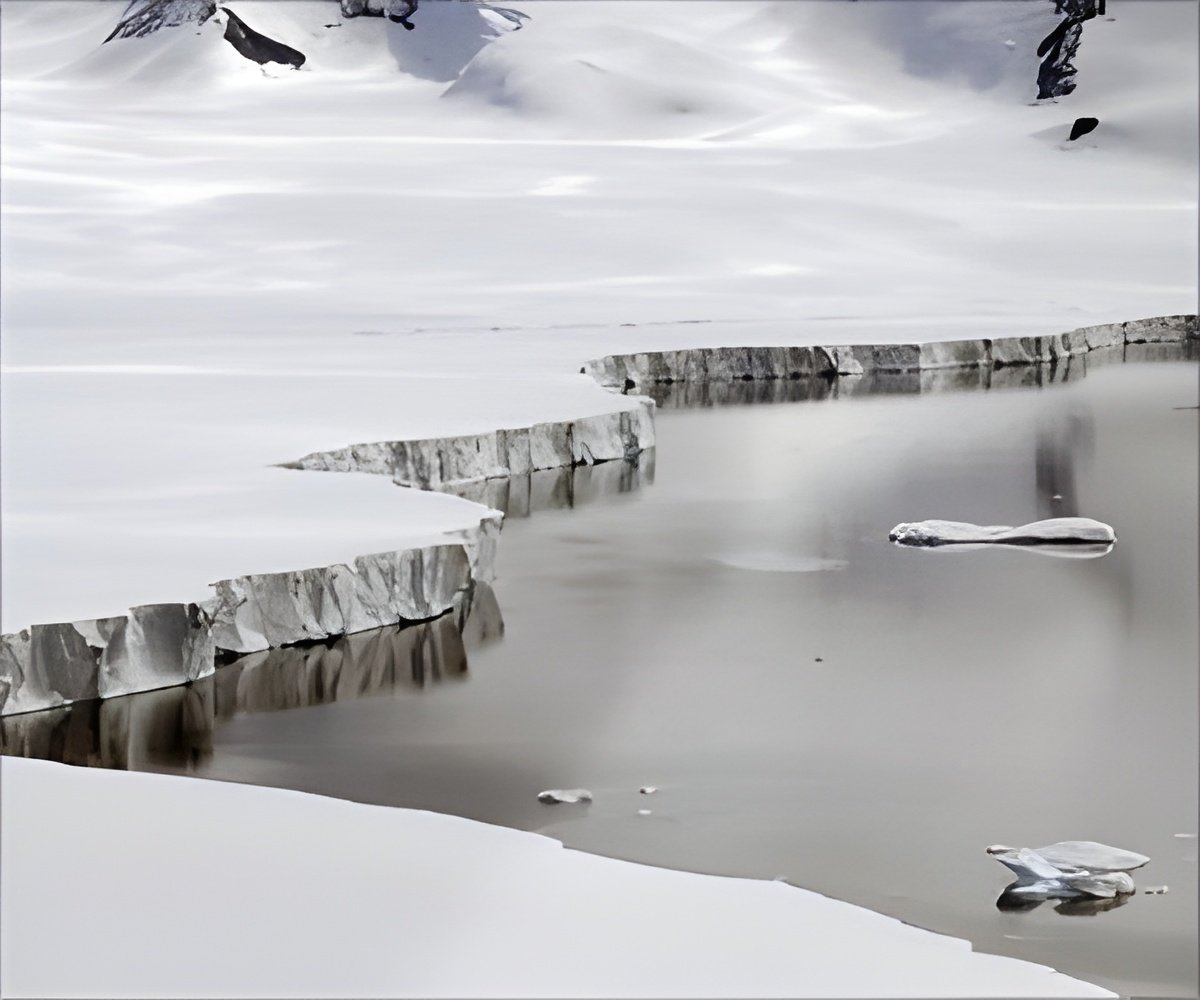
Every spring, as the sun rises in the Arctic after months of darkness, life reawakens. Polar bears emerge from their winter dens, arctic terns return from their long southern migrations, and musk oxen migrate north. However, animals are not the only ones revived by the spring sun. Dormant algae on the ice begin to bloom, darkening large areas of the ice (1✔ ✔Trusted Source
Giant viral signatures on the Greenland ice sheet
).
This darkening reduces the ice’s ability to reflect sunlight, accelerating its melting and contributing to global warming. Researchers may have found a way to control the growth of snow algae and potentially reduce ice melt. Postdoc Laura Perini from the Department of Environmental Science at Aarhus University and her colleagues have discovered giant viruses living alongside the algae on the ice.
’
She suspects that the viruses feed on the snow algae and could work as a natural control mechanism on the algae blooms.
Potential of Giant Viruses to Mitigate Ice Melting from Algal Blooms
– We don’t know a lot about the viruses, but I think they could be useful as a way of alleviating ice melting caused by algal blooms. How specific they are and how efficient it would be, we do not know yet. But by exploring them further, we hope to answer some of those questions, she says.
Viruses are normally much smaller than bacteria. Regular viruses measure 20-200 nanometers in size, whereas a typical bacteria is 2-3 micrometers. In other words a normal virus is around 1000 times smaller than a bacteria.
That is not the case with giant viruses though.
Giant viruses grow to the size of 2,5 micrometers. That is bigger than most bacteria.
Advertisement
But the giant viruses are not only bigger in size. Their genome is much bigger than regular viruses. Bacteriophages – virus infecting bacteria – have between 100.000 and 200.000 letters in their genome. Giant viruses have around 2.500.000.
Giant viruses were first discovered in 1981, when researchers found them in the ocean. These viruses had specialized in infecting green algae in the sea. Later, giant viruses were found in soil on land and even in humans.
Advertisement
But it’s the first time that giant viruses have been found living on the surface ice and snow dominated by microalgae, Laura Perini explains.
– We analyzed samples from dark ice, red snow and melting holes (cryoconite). In both the dark ice and red snow we found signatures of active giant viruses. And that is the first time they’ve been found on surface ice and snow containing a high abundance of pigmented microalgae.
A few years ago everyone thought this part of the world to be barren and devoid of life. But today we know that several microorganisms live there – including the giant viruses.
– There’s a whole ecosystem surrounding the algae. Besides bacteria, filamentous fungi and yeasts, there are protists eating the algae, different species of fungi parasitizing them and the giant viruses that we found, infecting them.
– In order to understand the biological controls acting on the algal blooms, we need to study these last three groups.
Even though the viruses are giant, they can’t be seen with the naked eye. Laura Perini hasn’t even seen them with a light microscope yet. But she hopes to do so in the future.
– The way we discovered the viruses was by analyzing all the DNA in the samples we took. By sifting through this huge dataset looking for specific marker genes, we found sequences that have high similarity to known giant viruses, she explains.
To make sure that the viral DNA didn’t come from long dead microorganisms, but from living and active viruses, they also extracted all the mRNA from the sample.
When the sequences of the DNA that form genes are activated, they are transcribed into single stranded pieces called mRNA. These pieces work as recipes for building the proteins the virus needs. If they are present the virus is alive.
– In the total mRNA sequenced from the samples, we found the same markers as in the total DNA, so we know they have been transcribed. It means that the viruses are living and active on the ice, she says.
At the center of the giant viruses is a cluster of DNA. That DNA contains all the genetic information or recipes needed to create proteins – the chemical compounds that are doing most of the work in the virus.
But in order to use those recipes, the virus needs to transcribe them from double-stranded DNA to single stranded mRNA.
Normal viruses can’t do that. Instead they have strands of RNA floating around in the cell waiting to be activated, when the virus infects an organism and hijacks its cellular production facilities.
Giant viruses can do that themselves which makes them very different from normal viruses.
Whereas DNA from dead viruses can be found in samples, mRNA is broken down much faster. mRNA is therefore an important marker of viral activity. In other words mRNA-recipes of certain proteins show that the viruses are alive and kicking.
Because giant viruses are a relatively new discovery not a lot is known about them. In contrast to most other viruses they have a lot of active genes that enable them to repair, replicate, transcribe and translate DNA.
But why that is and exactly what they use it for is not known.
– Which hosts the giant viruses infect, we can’t link exactly. Some of them may be infecting protists while others attack the snow algae. We simply can’t be sure yet, Laura Perini says.
She’s working hard on discovering more about the giant viruses and has more research coming out soon.
– We keep studying the giant viruses to learn more about their interactions and what is exactly is their role in the ecosystem. Later this year we’ll release another scientific with some more info on giant viruses infecting a cultivated microalgae thriving on the surface ice of the Greenland Ice Sheet, she concludes.
Reference:
- Giant viral signatures on the Greenland ice sheet – (https://microbiomejournal.biomedcentral.com/articles/10.1186/s40168-024-01796-y)
Source-Eurekalert



